You may find yourself drawn to the intricate criss-cross of tartan if you have Scottish ancestry or just love watching Outlander. But what exactly is tartan, and can you wear it? You will find answers to these questions and many more when you compare tartan vs. plaid.
Tartan and plaid both feature woven designs with two or more colors crossing over each other. The term “plaid” describes this crisscrossing design, and “tartan” refers to a unique plaid pattern that belongs to a Scottish family. Clan tartans originated in Scotland in the fifth century and remain important today.
In this article, you will learn the essential characteristics of plaid and tartan. You will also discover key differences between plaid fabric and tartan fabric. Finally, you will find comparisons of plaid and tartan vs other similar types of fabric.
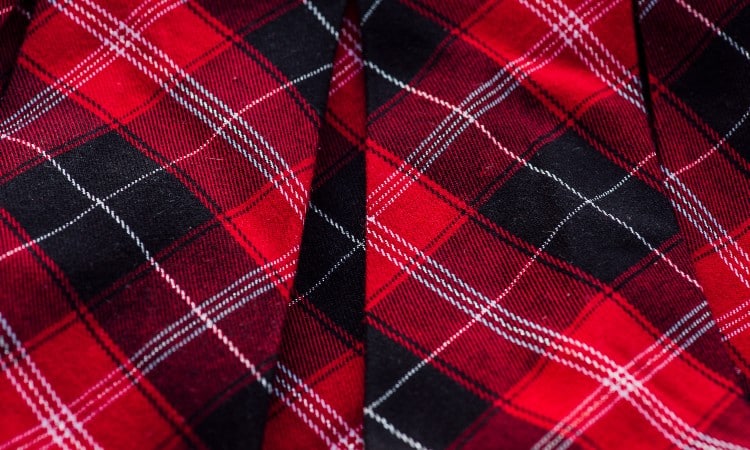
What is Plaid Fabric?
In America, the word “plaid” describes a woven design with horizontal and vertical colored threads crossing over each other. The word plaid covers any kind of crisscrossing woven pattern in any kind of cloth. You will see a plaid design most often in flannel, wool, or cotton cloth.
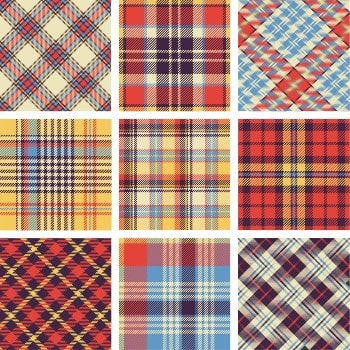 In America, a tartan design is classified as a kind of plaid. That said, in Scotland, the word “plaid” has multiple different meanings, as you will see later.
In America, a tartan design is classified as a kind of plaid. That said, in Scotland, the word “plaid” has multiple different meanings, as you will see later.
Farmhouse style has caused a resurgence of the plaid pattern in recent years. Cozy plaid pajamas have been popular for much longer.
So, where did the plaid design come from?
The first recorded use of the word “plaid” exists in a Scottish record, where it meant “blanket.” Archeologists report finding preserved fabric in a plaid design that dates back to the Dark Ages, though!
The many crisscross patterns of plaid emerged in the Scottish highlands. Later on, a wave of Scottish immigration brought plaid fabric to American shores.
In the early 19th century, a clever marketing scheme gave plaid a distinctly American twist. The company used a picture of Paul Bunyan wearing a plaid shirt to make the lumberjack look more appealing.
Of course, “plaid” covers a huge range of checked, tartan, and crisscrossing designs, including buffalo plaid.
Why do we call it buffalo plaid, anyway? According to lore, one of the Scottish immigrants who arrived in the early years of American history traded with Native Americans. He exchanged red-and-black-checked tartan blankets in return for animal pelts.
Presumably, some of those animal pelts included buffalo skins! Legend has it this led to the popular term buffalo plaid.
As a final note of cultural interest, plaid has served as a symbol of resistant or countercultural style multiple times. Besides the use of tartan in the highlands, plaid often serves as a key element of the punk wardrobe. Plaid shirts worn loose and often unbuttoned also became a big part of the grunge style in the 90s.
So, there’s something to think about when you decide whether or not to put a buffalo plaid table runner out for your next Thanksgiving dinner!
What is Tartan Fabric?
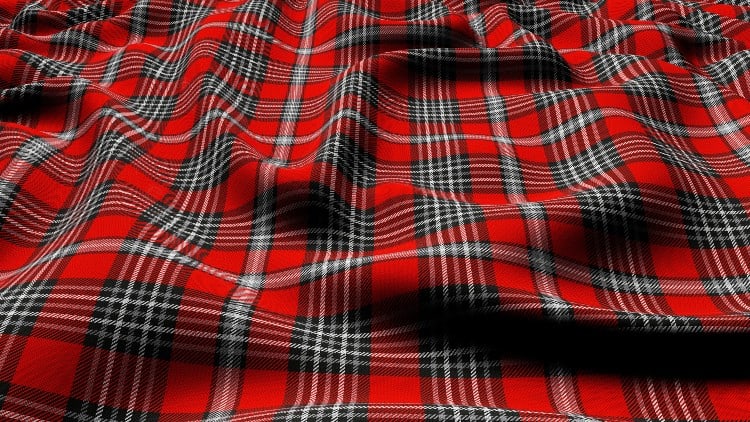
Tartan fabric is a plaid design with a name and a history associated with a specific Scottish family. Often these unique designs are registered in historical archives or online databases as clan tartans.
But first, a word about wording. In America, the words “plaid” and “tartan” get thrown around interchangeably. Both words sometimes describe any plaid pattern with horizontal and vertical crisscrossing lines.
In Scotland, the word “plaid” first meant the blanket or piece of clothing itself. The word “tartan” described the woven design.
The iconic Scottish kilt may have originated from the use of tartan blankets. These blankets could drape over the shoulder. Scottish people called them “plaids.”
No one knows when the blankets became pieces of clothing involving complex pleating and belting around the waist. But this practical fashion choice allowed Scottish men to stay warm and have their hands free at the same time!
Today, the word “tartan” refers to unique Scottish designs associated with particular clans or families. The patterns use more than two colors. They also have irregular crisscross patterns that give them a complex design.
Plus, many tartan designs include something called a “sett.” In plaid designs, a sett is a square that serves as a template for the rest of the design, repeating over and over. The square may include complex crisscrossing of several colors.
History

In the Scottish highlands, most towns or clans had their own weaver to make fabric for the community. Over time, the weavers created unique plaid patterns for the men of the town to wear as easy identifiers. In a sense, the tartan served as a sort of team uniform.
The weavers often used natural dyes to create the colors they used. This allowed them to build complex sets. These repeating crisscross patterns differentiated one tartan design from another.
The word “tartan” probably originated from the French word “tartaine,” which means checked cloth.
If you have religiously read all the books and watched every season of Outlander, you know about Scotland’s fight for independence. Scotland fought fiercely to become an independent nation throughout history. Scotsmen often wore their clan tartans as identifiers during these battles.
In the 16th century, the battle of Culloden brought an end to Bonnie Prince Charlie’s Jacobite uprising. England banned the wearing of clan tartans as part of the “Disarming Act.” This tragic period in history saw what amounted to almost a genocide of Highland families. Centuries of culture and history were suppressed.
Despite the tragedy, it is interesting to note that the oppressing government saw the tartan design as a threat. Clan patterns so strongly symbolized the culture of the highlands that the cloth itself became a threat! The ban held for more than 30 years until it was finally repealed in 1782.
By then, many Scottish families had immigrated to America, seeking the chance of freedom they had lost in their homeland.
Is Tartan Plaid Irish or Scottish?
While tartan plaid is a distinctly Scottish invention, the 19th century saw the rise of special Irish plaids as well.
Scottish tartan designs each belong to one clan or family and you can find over 25,000 unique tartan plaid patterns registered today! Irish plaid designs were created much more recently to represent each county of Ireland as a symbol of national pride.
For example, if you live in Galway, you might wear the Galway colors in your kilt as you march in a parade.
Do all Scottish Families have a Tartan?
Not every Scottish surname has a historic tartan design registered to it. People with Scottish ancestry sometimes choose to wear the tartan belonging to their mother’s maiden name in this case.
Today, Scottish districts, sports teams, and even businesses often register a tartan design as well. People can choose to wear that tartan as a sign of support for their favorite sports team!
With more than 25,000 officially registered tartans on record, you have a pretty good chance of finding one with significance to your family if you have a Scottish lineage.
Tartan vs. Plaid: What is the Difference?

The main difference between plaid and tartan designs lies in their association. Plaid refers to any woven design with crisscrossing horizontal and vertical lines. Tartan refers to a unique pattern associated with a specific clan or organization.
For example, your buffalo plaid PJs have a plaid design. Jamie’s kilt in Outlander is specifically a tartan design because that design belongs to Clan Fraser.
For this reason, you sometimes also see the phrase “tartan plaid” to describe tartan, as it is technically a type of plaid.
In the 16th century, at the height of the Highland culture, men wore a highland dress and their tartan colors all the time as identifiers. Today, tartan plaid is used most often for the highland dress such as kilts, sporrans, and jackets. It is often reserved for cultural events or fancy occasions.
In the simplest terms, the difference between tartan and plaid lies in cultural significance. Generic plaid designs look nice but don’t necessarily mean anything. Tartans have historical or cultural significance.
Tartan Names and Colors
Most tartan designs get their name from the clan, or extended family system, who first wore that design. The colors identify a clan, but they sometimes also have additional meaning.
For example, red and green patterns are associated with the catholic religion. Bluer designs represented the protestant religion at some points in history.
Tartans By Surname
In the highlands of Scotland, surnames usually indicated what clan you belonged to. This association could grow complex when smaller clans owed allegiance to more powerful clans. This meant that surnames could change over time.
Since each clan typically had a special tartan design, your surname also named your tartan pattern! For example, Clan Fraser has several unique tartans. These include Fraser Red, Fraser Hunting, and Frazer of Lovat.
If you have Scottish ancestry, you can find your tartan pattern by searching online databases using your surname. Please note that surname spellings often change a lot over time, so you might have to do some genealogical research first!
Several societies and organizations have worked to create a modern registration of clan tartans. The Scottish Register of Tartans serves as the most official registry now.
Tartan Names and Colors
Tartan names and colors have a great deal of cultural significance. Each tartan design is associated with a family, clan, or organization today. Many designs have careful records officially registered.
Unfortunately, not all tartan patterns worn in the past got such careful chronicling. Since natural fibers rot easily, many early clan tartans vanished from history.
If you dive into the world of tartans, you will find mention of modern colors, ancient colors, and muted colors. These terms describe the kind of dye used to create a tartan design.
Modern color uses bright, chemical, or synthetic dyes. This creates the vibrant reds, greens, and blues you think of when you picture a kilt!
Ancient colors try to replicate the natural dyes the original highland weavers used. This creates a pale, less vibrant version of the same design.
Muted colors emerged in the late 20th century as people became interested in recreating the original color of the design. It’s basically a modern attempt to reproduce the ancient colors.
Most tartan names come from the clan or family who first wore that design. Clans and families wore woven clothing for hundreds of years. But tartans saw a big surge in popularity among Scottish and British people after George IV visited Scotland in the early 1800s.
No English monarch had visited Scotland for more than a hundred years before this! This led to the “Georgian craze” over tartan.
This, in turn, eventually inspired Queen Victoria to visit Scotland and buy Balmoral castle. The royal family even used a special royal family design to decorate! This tartan has several patterns, including the Dress Stewart and the Hunting Stewart.
Who Can Wear a Clan Tartan?
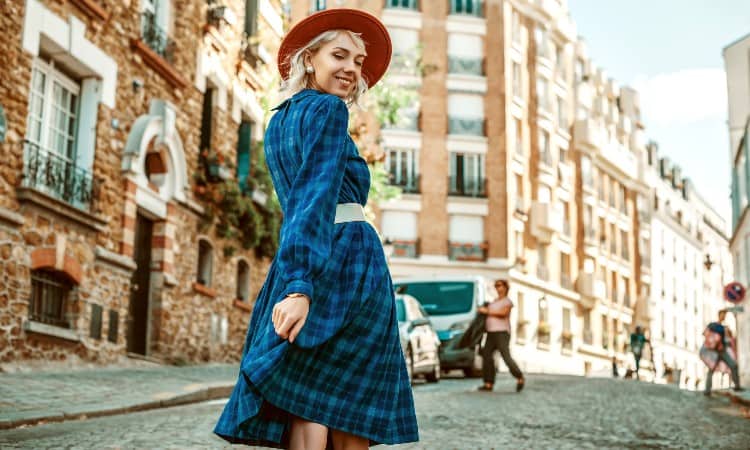
Some tartan patterns belong exclusively to a certain group of people, like the British royal family. Anyone can wear many tartan patterns, though–even people without Scottish ancestry!
 You can even find special universal tartan designs intended for general wear. This allows you to celebrate Scottish heritage (or attend your local October Fest) while wearing a kilt without feeling guilty!
You can even find special universal tartan designs intended for general wear. This allows you to celebrate Scottish heritage (or attend your local October Fest) while wearing a kilt without feeling guilty!
Some tartan patterns that used to have unique significance have become universal today as well. For example, the Black Watch tartan once belonged to military units of Scotsmen employed by the British crown to police Scotland. Today, the popular green and black tartan designs show up in all kinds of popular clothing for the general public.
Of course, you also want to avoid any possible cultural appropriation. In general, you should only wear a kilt to appropriate events if you aren’t Scottish.
That said, in general, you won’t offend by wearing a kilt, no matter what cultural background you have!
Tartan vs Flannel
The main difference between tartan and flannel is that flannel is a material, while tartan is a type of design woven into the material.
Flannel has a soft, brushed surface and usually contains cotton or wool fibers. While you could find flannel woven with a tartan design, you could also see flannel in a plaid or checked design. Of course, you can also find flannel printed with hearts, unicorns, or astronauts!
You may have flannel sheets for the winter months or favorite flannel pajamas. Flannel holds a lot of warmth in its velvety pile, so you probably reserve it for chilly weather.
That said, the ever-popular flannel shirt, worn by everyone from grunge bands to lumberjacks, is usually made of flannel. Plaid shirts, pants, and pajamas are quite often made of flannel material. Sometimes this plaid partan might even feature a specific tartan pattern!
Tartan vs Plaid vs Check
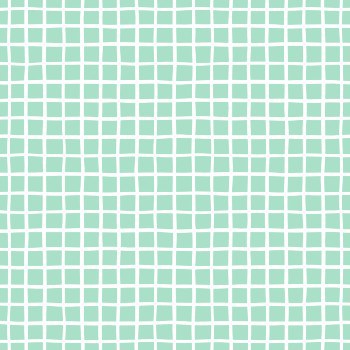 Tartan, plaid, and check all describe special patterns woven into cloth, but each type of design has its unique characteristics.
Tartan, plaid, and check all describe special patterns woven into cloth, but each type of design has its unique characteristics.
As you now know, plaid describes any crisscross pattern, no matter how simple or complex. Technically, tartans are plaids, and so are check patterns.
More specifically, every tartan pattern has a name and history and typically belongs to a family or organization.
Checks form a simple plaid pattern, only using two colors or shades. You can think of a check pattern like a chessboard because the wide crisscrossing bands of color create regular squares. These look like a gameboard.
Essentially, checked fabric has colored stripes that cross each other at right angles.
You see checked flannel a lot, especially in those big cozy flannel jackets you can wear camping or out into the woods.
Tartan vs Plaid vs Gingham
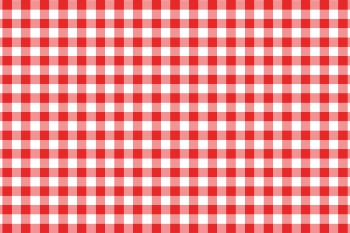 Tartan, plaid, and gingham share some key characteristics. All three patterns feature crisscrossing horizontal and vertical lines, for example.
Tartan, plaid, and gingham share some key characteristics. All three patterns feature crisscrossing horizontal and vertical lines, for example.
Gingham describes a type of cotton fabric printed or woven with checks in one color. Sometimes the color might have two shades, such as pale and dark yellow.
Gingham has a repeating checked pattern made of stripes in one color crossing each other. The squares made by the stripes intersecting each other usually have a very small size.
You can think of it as a picnic tablecloth design or a retro 1950s housewife dress.
This type of fabric doesn’t require a complex textile design. It has remained popular since the 1700s when it contained a type of fabric called fustian.
Plaid, of course, encompasses a wide array of crisscross designs, including checked fabrics. That said, when you refer to a “plaid pattern” you usually mean a more complete design with contrasting colors crisscrossing each other. Think of a Christmas sweater style.
And every tartan pattern, as you now know, is a unique plaid design.
Both tartan and plaid designs can appear in many different types of material, while a gingham design typically only shows up on cotton.
What is the Difference Between Tartan and Madras?
 The main difference between madras and tartan patterns lies in the origins of each design. Both patterns feature crossing lines in an uneven checked design. They also both use multiple colors.
The main difference between madras and tartan patterns lies in the origins of each design. Both patterns feature crossing lines in an uneven checked design. They also both use multiple colors.
Madras patterns evolved in a town in India once called Madras (now Chennai). This brightly-colored pattern uses many lines of alternating thicknesses. This creates a cheerful checked pattern.
In fact, it looks like a summery plaid!
In America, you may see the term “madras plaid” to describe this style of fabric. It often shows up in cotton or seersucker materials meant for summer wear. You can find this design a lot in shorts and summer button-down shirts.
Madras patterns often use bright, pastel colors in contrast to the rich, wintery shades of many tartan designs. That said, both patterns are technically types of plaid.
What is the Difference Between Tartan and Tweed?
 The main difference between tartan and tweed lies in the regularity of the designs. Both tartan and tweed describe a specific type of woven design, but the patterns look quite different from each other.
The main difference between tartan and tweed lies in the regularity of the designs. Both tartan and tweed describe a specific type of woven design, but the patterns look quite different from each other.
Tweed patterns don’t have an association with clans or families like tartan patterns. You can find many variations in tweed designs. But most of them feature a twill weave in a herringbone, check, chevron, or heather pattern.
Tweed may include more than one color or shade. Typically this cloth has a fairly monochromatic style.
Tweed usually contains 100% wool. That said, you can find cheaper blends from some sellers today. This style of cloth came from the Tweed valley in England.
In the 1800s it rocketed to popularity when Harris Tweed used it for sportswear. Women, in particular, began to wear tweeds for outdoor pursuits.
So, tartan and tweed patterns both have complex woven designs. That said, they look quite different and carry different cultural significance.
Conclusion
Plaid patterns include a broad range of designs like tartans, madras style, and checks. The main difference between tartan and plaid is that a tartan pattern is a unique design with cultural significance. Plaid describes any woven pattern that features lines intersecting horizontally and vertically.
A plaid shirt might feature a tartan design or simple buffalo checks. Plaid designs originated in many different parts of the world, including Scotland and India. Today, you can find them woven into everything from kilts to pajamas to summer shorts!
Do you have a favorite style of plaid? Leave a comment below to let us know!